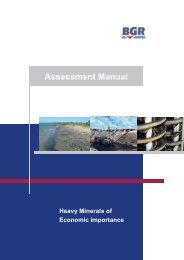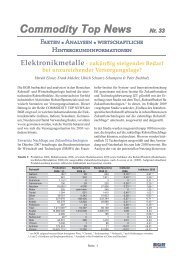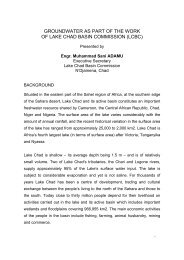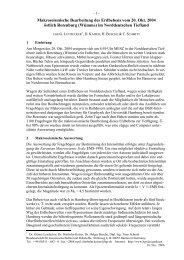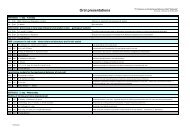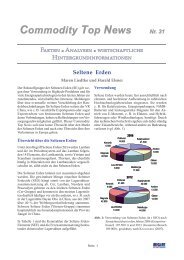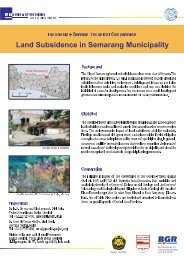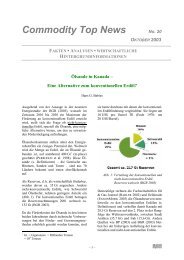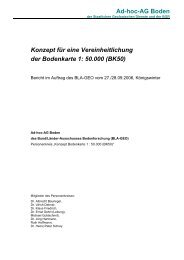THE SMOOTH SOUNDING GRAPH. A Manual for Field Work ... - BGR
THE SMOOTH SOUNDING GRAPH. A Manual for Field Work ... - BGR
THE SMOOTH SOUNDING GRAPH. A Manual for Field Work ... - BGR
Create successful ePaper yourself
Turn your PDF publications into a flip-book with our unique Google optimized e-Paper software.
42<br />
2.2. Possible errors influencing the measurement<br />
It sometimes happens that one or more points of a sounding graph drop<br />
out. The resulting curve cannot be smooth. Some of these possible rea-<br />
sons shall be explained in the following.<br />
2.2.1. Current electrode wrongly grounded: remain standing<br />
When an assistant has not noticed the signal <strong>for</strong> shifting the electrode and<br />
is remained standing, while the other is moved on, then the distance be-<br />
tween the electrodes A and B is too short in comparison to the configura-<br />
tion factor K. The K used <strong>for</strong> calculating ρa is there<strong>for</strong>e too large. This<br />
means, that the apparent resistivity ρa will be too high, i.e. when an assis-<br />
tant is remained standing the point drops out upwards.<br />
2.2.2. Current electrode wrongly grounded: surpassing<br />
When an assistant has missed the following L/2 mark after the signal <strong>for</strong><br />
shifting the electrodes and has surpassed it, then the distance between<br />
the electrodes A and B is too large in comparison to the configuration fac-<br />
tor K. The K used <strong>for</strong> calculating ρa is there<strong>for</strong>e too small. A too small K,<br />
however, means that a lower apparent resistivity ρa will be recorded. i.e.<br />
when an assistant has surpassed an L/2-mark the point drops out down-<br />
wards.<br />
2.2.3. Wire-mesh-fence (Fig.26/27)<br />
We assume that a wire-mesh-fence in its lower part touches the ground.<br />
With this, a conductive connection to the underground parallel to the<br />
measuring range exists. When the electrode reaches the beginning of the<br />
wire-mesh-fence, there are still no effects at the sounding graph. But<br />
when the electrode passes the wire-mesh-fence and is grounded near to<br />
the fence, it seems that the current flows into the ground at the beginning<br />
of the fence; that means: when the electrode is shifted from the begin-<br />
ning to the end of the fence, it seems that the electrode effectively has<br />
not been moved at all. According to case 2.2.1. the point drops out up-<br />
wards.



